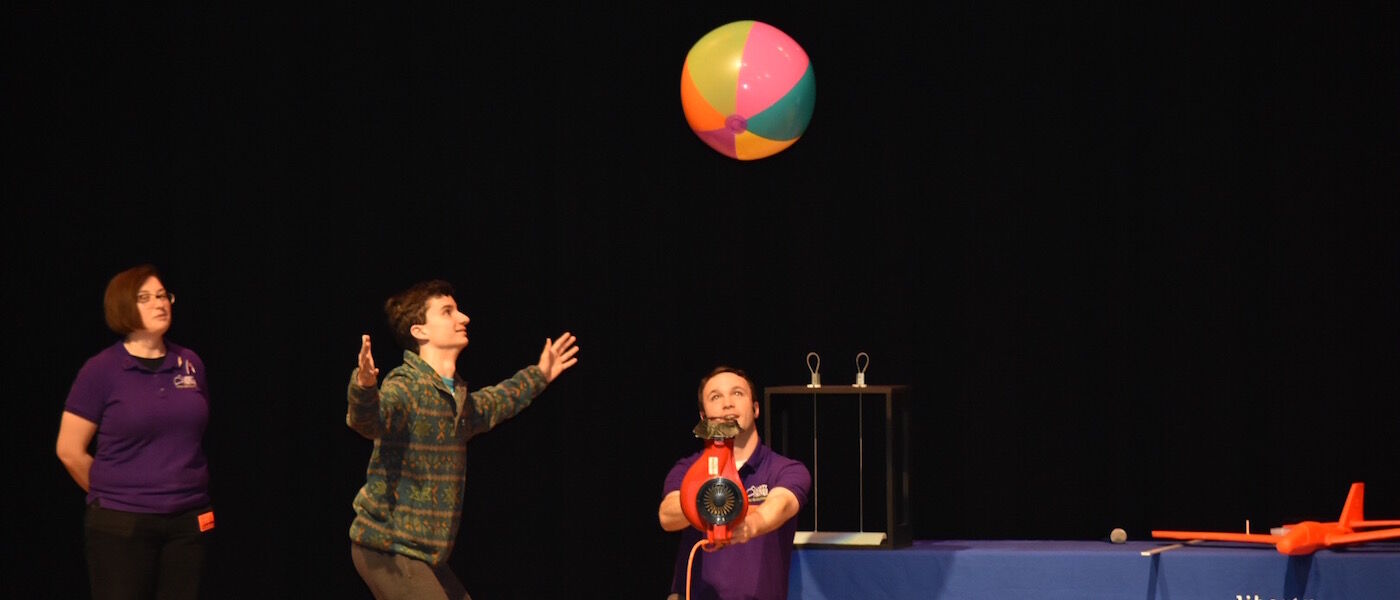Behind-the-STEM: STEM educators spread their wings!
Writer: C.J. Donaghue
Position: STEM Educator
Here at Liberty Science Center, we're always aiming to do things that science centers have never done before. We take risks, we're curious, and we're always trying new things – and that's exactly what science is all about!
This is all evidenced in one of our newest Traveling Science programs, "The Science of Flight."
Recently, my colleague Brittany and I were scheduled to teach this program at a local school assembly. We were both excited, and a little nervous – it was the first time I would teach the program, and only the second time for Brittany.
As we set up on stage before the students arrived, we double checked everything and made sure nothing was overlooked. Finally, the doors opened and our first group came in: fourth graders who were eager to see what we got!
We began with some trivia about the history of flight and how it’s possible. The students all excitedly called out “The Wright Brothers!” when we asked who invented the first airplane.
Brittany and I smiled at their excitement before moving onto the objective of the program, which focuses on the four forces of flight: drag, thrust, weight, and lift. We held a series of fun experiments to demonstrate these forces – for thrust, for example, we combusted a fuel mixture that simulated how a jet engine provides thrust for an aircraft. We dropped a match into a container and allowed a combustion to happen. After a loud whoosh of fire and wind, the students cheered and were excited to learn more!
We then strapped a student volunteer into a “rocket chair," which demonstrates the third law of motion – “For every action, there is an equal and opposite reaction" – by having them shoot across the stage riding the chair fueled by a canister of compressed CO2 gas.
When demonstrating lift, we first explained the science behind air pressure in hovercraft technology. So what better way to teach that than by having a student come up and ride an actual hovercraft?
After riding the hovercraft on stage, the student volunteer exclaimed how fun it was. Brittany and I were thrilled that the students were responding so well to our new program.
Following three, 45-minute sessions, the program was complete! Brittany and I congratulated each other on another job well done and made the journey back to LSC. We were both thrilled – just like the Wright Brothers, we had tried something new and came out successful.
Interested in learning more about Traveling Science Programs like this one? Click here for more information!
